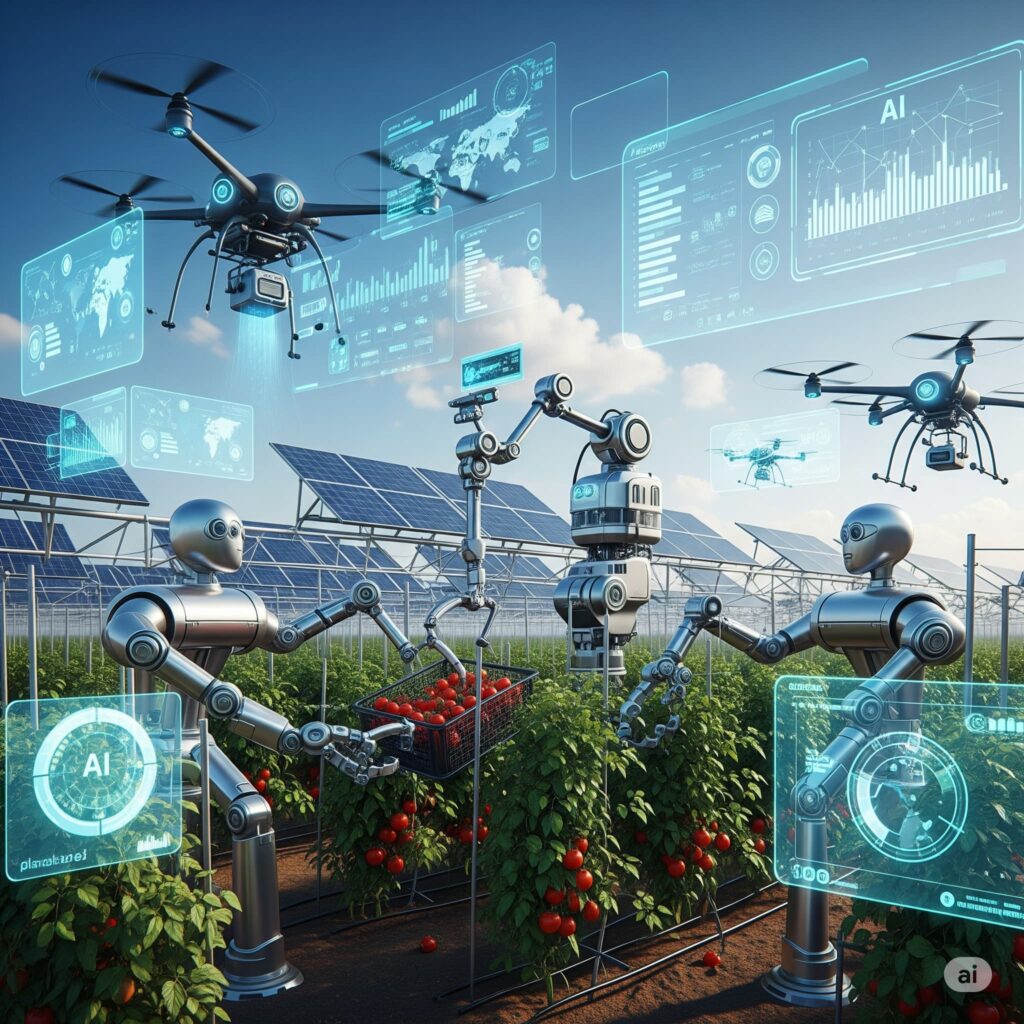
Farming, a cornerstone of human civilization, is undergoing a significant transformation. Technology, particularly artificial intelligence (AI), is revolutionizing how we grow our food, making farming more efficient, sustainable, and profitable. This post explores the exciting ways AI is shaping the future of agriculture.
Precision Farming: Optimizing Resource Use
AI is enabling precision farming, a data-driven approach that optimizes resource use and maximizes yields. Instead of a “one-size-fits-all” approach, precision farming tailors inputs like water, fertilizer, and pesticides to the specific needs of each section of a field.
This is achieved through various AI-powered tools:
- Sensors embedded in the soil monitor moisture levels, nutrient content, and temperature.
- Drones equipped with cameras and sensors capture high-resolution images of crops, identifying areas needing attention.
- Machine learning algorithms analyze this data to create detailed maps of the field, revealing variations in plant health and soil conditions.
- Based on this information, farmers can apply resources precisely where needed, minimizing waste and environmental impact.
For example, a farmer might use AI to identify areas of a field experiencing drought stress. The system would then automatically trigger irrigation in those specific zones, conserving water while ensuring optimal crop growth. Similarly, the system can identify areas with nutrient deficiencies and recommend targeted fertilizer application, reducing costs and environmental pollution.
Crop Monitoring and Disease Detection: Early Warning Systems
AI-powered image recognition systems are transforming crop monitoring and disease detection. These systems can analyze images captured by drones or satellites, identifying early signs of disease, pest infestations, or nutrient deficiencies that might otherwise go unnoticed. This early warning allows farmers to take timely action, preventing widespread crop damage and significant yield losses.
- Early detection of diseases like blight or fungal infections can significantly reduce crop losses.
- AI can identify specific pests and recommend appropriate control measures, minimizing reliance on harmful pesticides.
- Automated analysis of plant health indicators, such as leaf color and size, provides insights into overall crop vigor and potential yield.
Imagine a farmer receiving an alert on their smartphone indicating a potential blight outbreak in a specific part of their field. They can then immediately take steps to address the problem, preventing a larger, more costly issue.
Robotic Automation: Easing the Labor Burden
Agriculture is labor-intensive. AI-powered robots are automating many of these tasks, addressing labor shortages and improving efficiency. These robots can perform a variety of functions, including:
- Planting seeds with greater precision and efficiency.
- Harvesting crops, reducing reliance on manual labor.
- Weeding, reducing the need for herbicides.
- Monitoring crop health and identifying problems automatically.
Autonomous tractors guided by GPS and AI are already in use on many farms, allowing farmers to cover more ground in less time. These tractors can perform tasks like plowing, planting, and spraying pesticides with greater accuracy and consistency than human operators.
Predictive Analytics: Forecasting Yields and Optimizing Strategies
AI’s predictive capabilities are invaluable for farmers. By analyzing historical data, weather patterns, soil conditions, and other relevant factors, AI can forecast crop yields with greater accuracy. This enables farmers to make informed decisions about planting, harvesting, and marketing their crops.
- Predicting yields allows farmers to plan their resources effectively and avoid potential shortages or surpluses.
- AI can also help farmers optimize their planting strategies, selecting the best varieties for specific conditions and maximizing yields.
- Forecasting weather patterns allows farmers to prepare for potential challenges, such as droughts or floods.
This kind of predictive modeling assists with long-term planning and mitigates risks associated with unpredictable weather and market fluctuations.
The Future of AI in Agriculture: A Sustainable Path Forward
The integration of AI in agriculture is not just about increased efficiency and profitability; it’s also about sustainability. By optimizing resource use and reducing waste, AI helps farmers minimize their environmental impact. Furthermore, AI-powered systems can help farmers adapt to the challenges of climate change, ensuring food security for a growing global population.
The continued development and adoption of AI technologies in agriculture will undoubtedly lead to even more innovative solutions in the years to come. From improved crop breeding techniques to more sophisticated monitoring systems, AI is poised to transform the agricultural landscape, making farming more efficient, sustainable, and resilient to the challenges of the future. The smarter farming of tomorrow depends on the technology of today.